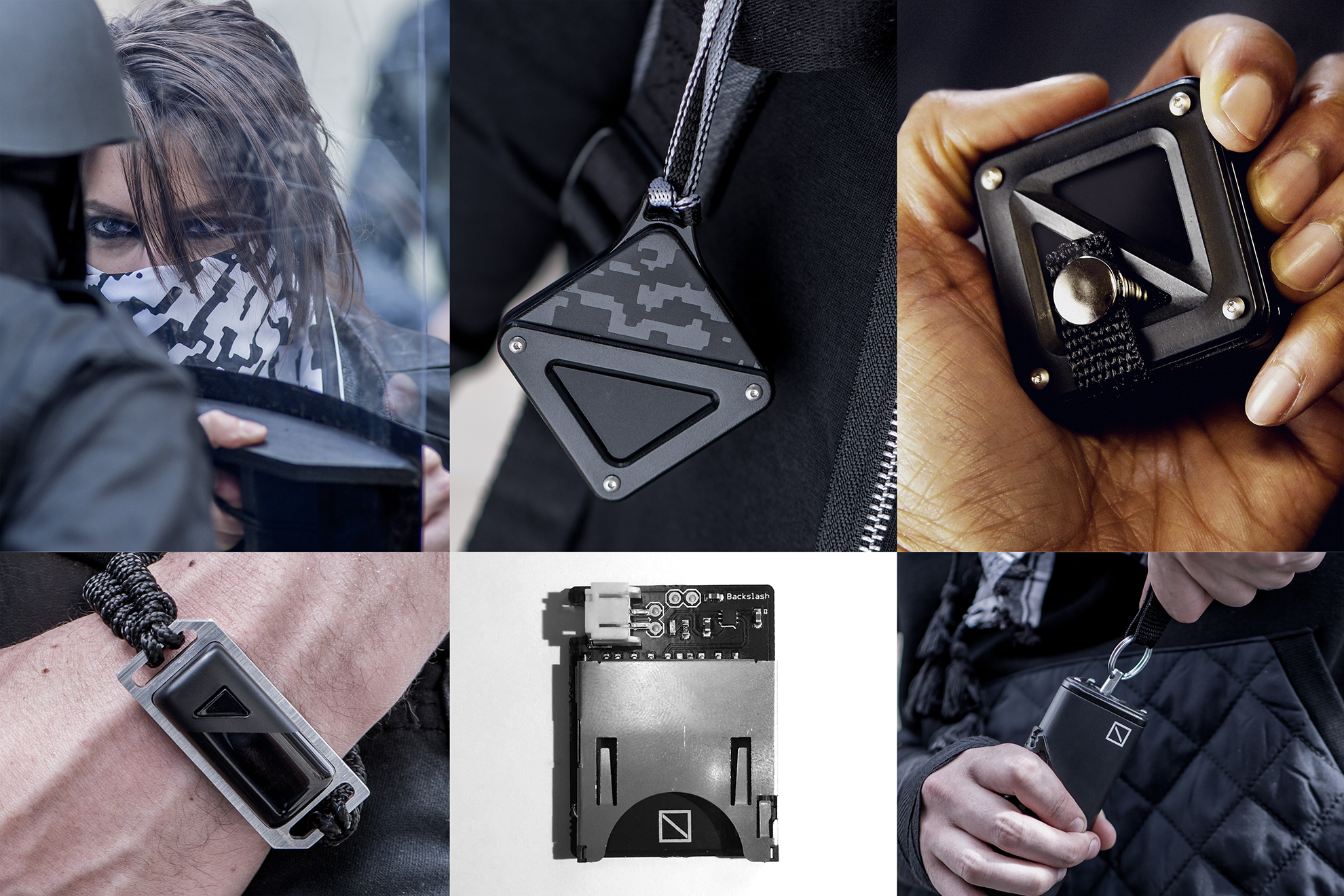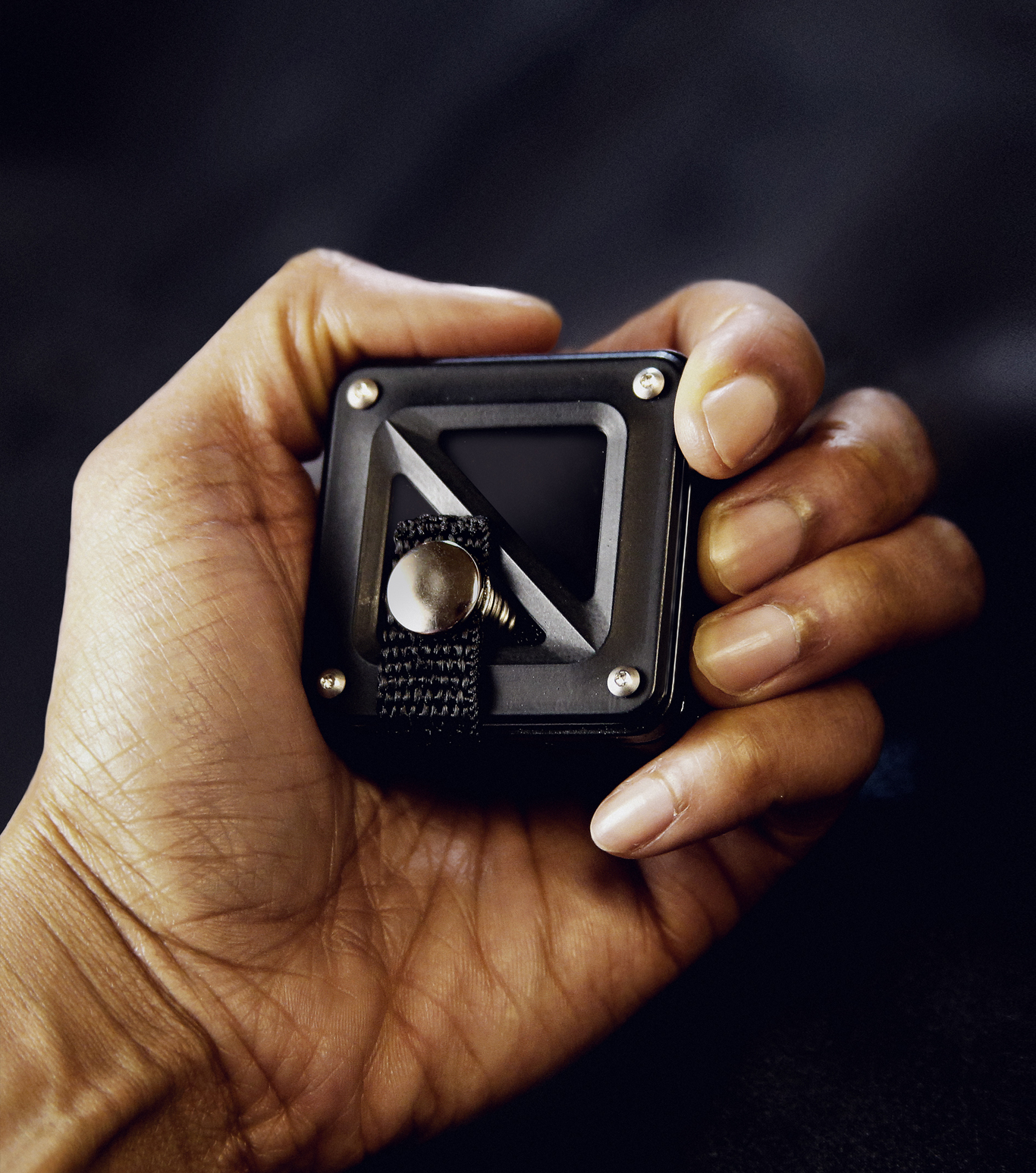

Backslash is a guerrilla kit for protests of the future. Modern protesters believe connectivity is a basic human right. Backslash addresses the relationship between protests and technology, cultivating dialog about freedom of expression, riots and disruptive tech.
The future of technology in protest looks dark. The hyper-militarization of law enforcement has become widespread as global governments attempt to suppress dissent and monitor their citizens. There is a huge disparity between the amount of technologies used by the authorities and the technologies available to protesters and activists during protests and riots.
How can the global community retain the right to free speech and public assembly in a safe and effective manner? How can we level the technological playing field for activists and the general population?
IN FUTURE PROTESTS,
As designers and artists, we find this to be a very compelling challenge. We are interested in the technologies that could help to start this conversation.
Backslash is a series of functional devices designed for protests and riots of the future. Created through the lens of critical design, Backslash aims to retain the right to connect in protest sites through the creative appropriation of existing technologies.
The future of technology in protest looks dark. The hyper-militarization of law enforcement has become widespread as global governments attempt to suppress dissent and monitor their citizens. There is a huge disparity between the amount of technologies used by the authorities and the technologies available to protesters and activists during protests and riots.
How can the global community retain the right to free speech and public assembly in a safe and effective manner? How can we level the technological playing field for activists and the general population?
IN FUTURE PROTESTS,
HOW WILL THE UNDERGROUND FIGHT BACK?
As designers and artists, we find this to be a very compelling challenge. We are interested in the technologies that could help to start this conversation.
Backslash is a series of functional devices designed for protests and riots of the future. Created through the lens of critical design, Backslash aims to retain the right to connect in protest sites through the creative appropriation of existing technologies.




Political, social and cultural landscapes vary immensely from country to country. Not all the protests look like Hong-Kong, where the average protester had at least 3 personal devices connected to the internet. A one-size-fits-all solution to these dynamic situations is irrational and impractical. Alternately, we believe Backslash is the starting point for local design and maker communities to collectively reinvent the technological culture in protests.
Backslash is not created with a political agenda nor is it a call to action. Instead, it is design to provoke thought, to spark debate and design that can empower the individual to better their community.
Backslash is not created with a political agenda nor is it a call to action. Instead, it is design to provoke thought, to spark debate and design that can empower the individual to better their community.
Credits
Created by: Pedro Oliveira & Xuedi Chen
Photographer: Roy Rochlin
Cinematographer: Joanne Mony Park
Makeup: Josephine Kong
Select Press
FastCompany, Wired, Ars Technica, BoingBoing, The Creators Project, Vice, Veja, and more.
Created by: Pedro Oliveira & Xuedi Chen
Photographer: Roy Rochlin
Cinematographer: Joanne Mony Park
Makeup: Josephine Kong
Select Press
FastCompany, Wired, Ars Technica, BoingBoing, The Creators Project, Vice, Veja, and more.
Medium
Custom electronics, 3D printed enclosures, Aluminum, Vacuum Formed Plastic, Laser Cut Acrylic, Custom Printed Fabric.
Awards
SxSW Interactive award finalist - 2016, A’ Design Award Winner - 2016, Core 77 Design Award honoree and Community Choice award winner - 2016
Exhibitions
Radical Networks - 2015, Open Hardware Summit - 2015, Facets Con - 2016, Perfect Bodies | Rebellious Machines, Mexico City - 2017
Custom electronics, 3D printed enclosures, Aluminum, Vacuum Formed Plastic, Laser Cut Acrylic, Custom Printed Fabric.
Awards
SxSW Interactive award finalist - 2016, A’ Design Award Winner - 2016, Core 77 Design Award honoree and Community Choice award winner - 2016
Exhibitions
Radical Networks - 2015, Open Hardware Summit - 2015, Facets Con - 2016, Perfect Bodies | Rebellious Machines, Mexico City - 2017